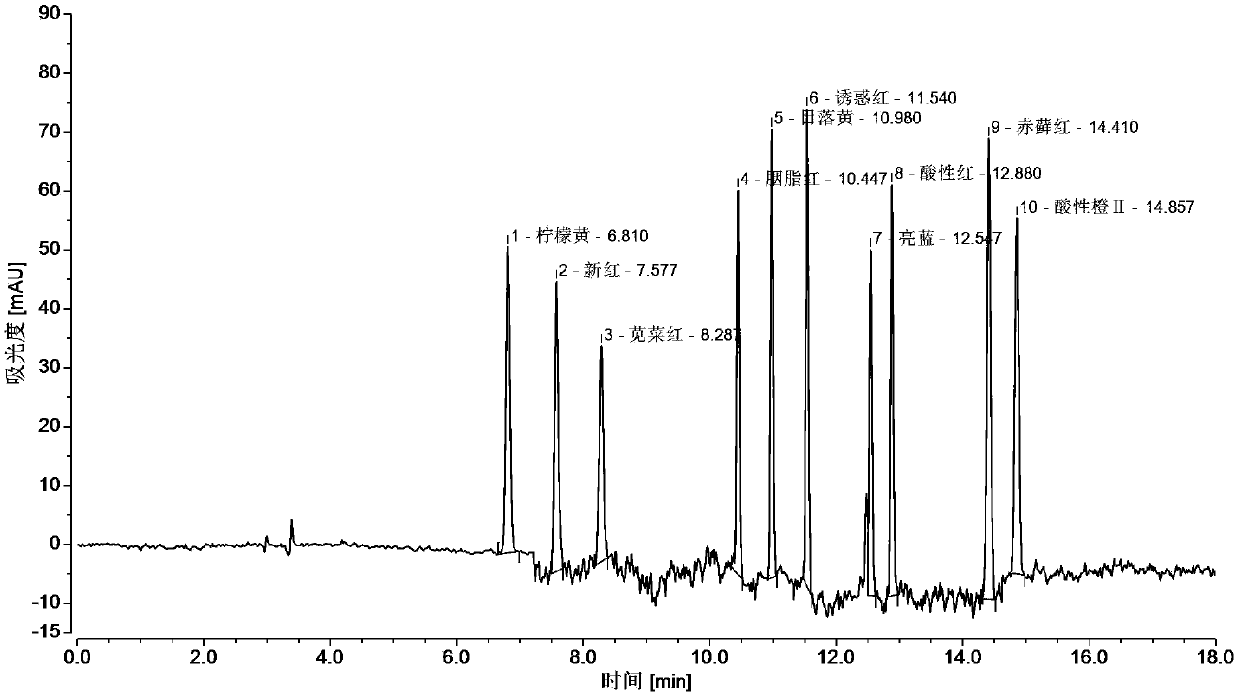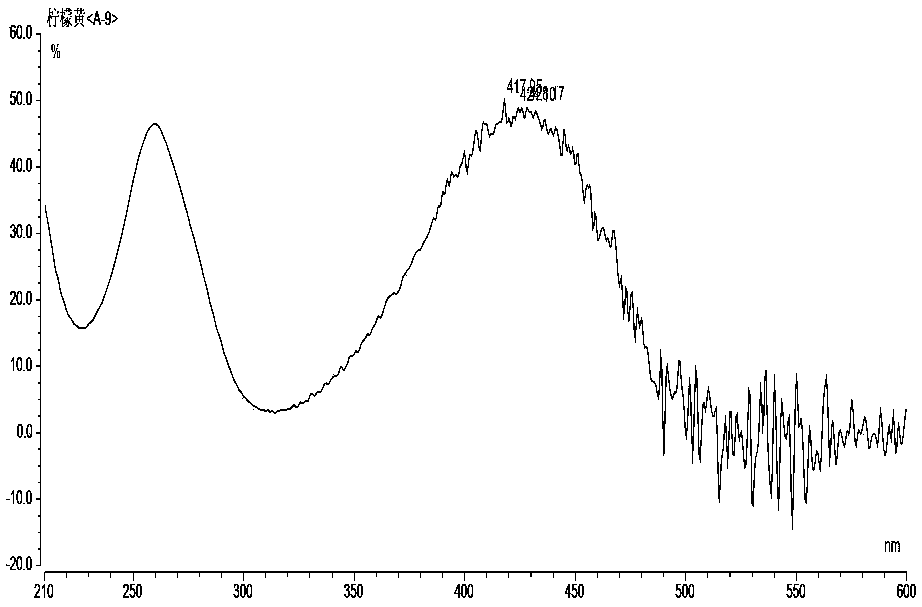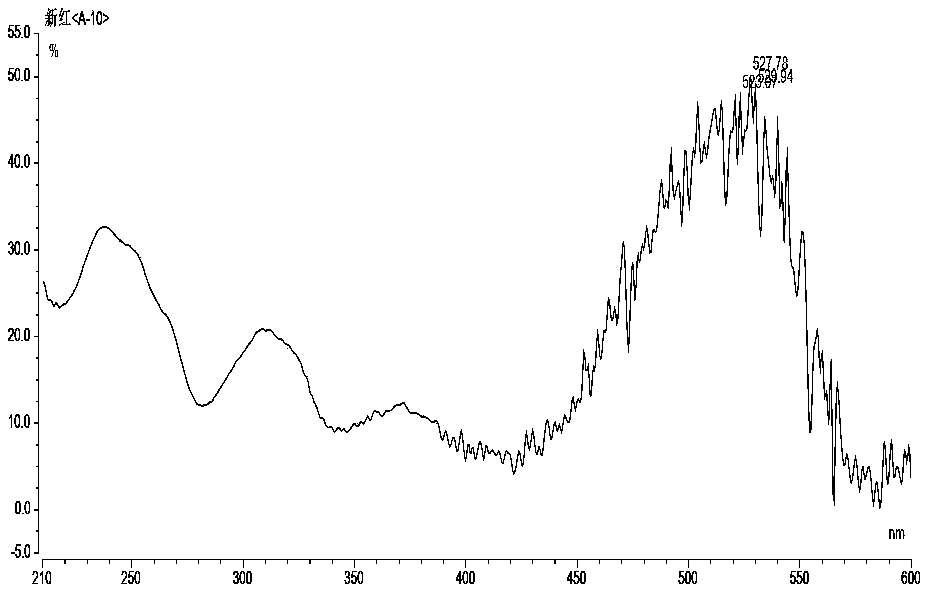Method of simultaneously detecting various synthetic pigments in wheaten foods via HPLC-DAD
A technology for synthesizing pigments and pasta, applied in measuring devices, instruments, scientific instruments, etc., can solve the problems of complex testing items, cumbersome processing, and many types of samples
- Summary
- Abstract
- Description
- Claims
- Application Information
AI Technical Summary
Problems solved by technology
Method used
Image
Examples
Embodiment Construction
[0042] In order to make the object, technical solution and advantages of the present invention more clear, the present invention will be further described in detail below in conjunction with the examples. It should be understood that the specific embodiments described here are only used to explain the present invention, not to limit the present invention.
[0043] The invention provides a method for simultaneously detecting multiple synthetic pigments in pasta by HPLC-DAD, comprising the steps of:
[0044] A. Standard working solution and sample preparation
[0045] Preparation of standard stock solution: Precisely weigh each standard substance to volume with water, and the concentration is 500 μg / mL.
[0046] Store in refrigerator at 4°C.
[0047] Preparation of standard working solution: Dilute the stock solution into a series of working solutions with concentrations of 1.0μg / mL, 2.0μg / mL, 5.0μg / mL, 10.0μg / mL, and 20.0μg / mL according to the needs.
[0048] Mixed standard ...
PUM
 Login to View More
Login to View More Abstract
Description
Claims
Application Information
 Login to View More
Login to View More - R&D
- Intellectual Property
- Life Sciences
- Materials
- Tech Scout
- Unparalleled Data Quality
- Higher Quality Content
- 60% Fewer Hallucinations
Browse by: Latest US Patents, China's latest patents, Technical Efficacy Thesaurus, Application Domain, Technology Topic, Popular Technical Reports.
© 2025 PatSnap. All rights reserved.Legal|Privacy policy|Modern Slavery Act Transparency Statement|Sitemap|About US| Contact US: help@patsnap.com



